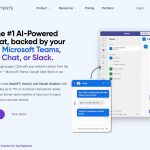
Let’s be honest. Organic social media reach for brands is… tough. It feels like you’re shouting into a hurricane. You pour your heart into a post, and the algorithm gives you a polite golf clap. Meanwhile, your employees are out there with their own vibrant networks, sharing vacation photos, life updates, and funny memes, effortlessly commanding attention.
What if you could bridge that gap? Well, you can. That’s the entire premise of an employee advocacy program. It’s not about turning your team into corporate robots. It’s about empowering them to share your company’s story in their own authentic voices. The result? A massive, and honestly, more trustworthy, expansion of your organic social reach.
Why Your Brand’s Voice Isn’t Enough Anymore
Think of your company’s social media channel as a billboard on a busy highway. People see it, sure. But they’re driving past. Now, imagine a recommendation from a trusted friend. That’s a conversation. That’s what employee advocacy creates.
Here’s the deal: content shared by employees receives 8 times more engagement than content shared by brand channels. Let that sink in. Eight times. And it gets better. That same shared content has a click-through rate that’s 2 times higher. Why? Because it comes with a built-in layer of trust. People connect with people, not logos.
It’s the ultimate antidote to the sterile, overly polished corporate messaging that everyone has learned to scroll past. An employee’s post has a human fingerprint on it—a slight imperfection, a personal comment, a real voice. And in a crowded digital space, that authenticity is pure gold.
Building Your Advocacy Program: It’s a Garden, Not a Factory
You can’t just order people to start posting. That’s a recipe for disaster, or at the very least, some incredibly awkward content. A successful program is more like cultivating a garden. You prepare the soil, plant the seeds, provide nourishment, and then watch it grow. You can’t pull on the sprouts.
Lay the Foundation: Trust and Transparency
Before you do anything else, you need to get this part right. Employees need to know this is voluntary. Always. The goal is enthusiastic participation, not coerced compliance. Be crystal clear about the guidelines—what’s encouraged, what’s off-limits. This isn’t about control; it’s about providing guardrails so everyone feels safe and confident.
And please, for the love of all things good, make it easy for them. Don’t expect them to hunt for content. You have to be the content curator.
Fuel the Engine: Content is King (But Context is Queen)
Your employees aren’t just a distribution network for your latest blog post. They need a variety of content to share. A mix that feels valuable to their networks.
- Company Culture Stuff: Behind-the-scenes photos, team event recaps, employee spotlights. This builds pride and showcases your employer brand.
- Industry News & Insights: Curated articles from third-party sources. This positions your employees as thought leaders, not just company promoters.
- Product Launches & Big News: The obvious one. But give them the “why” behind the launch, not just the “what.”
- Personal Stories: The most powerful category. An employee talking about a project they’re proud of, a challenge they overcame, or what they’ve learned.
The key is to provide the raw ingredients—the links, the images, the key messages—but encourage them to add their own spice. A personal comment, a unique perspective. That’s where the magic happens.
Making it Work: The Nuts, Bolts, and Motivation
Okay, so you’ve got the philosophy down. How do you actually, you know, do it? A structured platform can be a huge help, but it doesn’t have to be complicated. It could start as a dedicated Slack channel or a simple newsletter.
The real question is motivation. Why should your employees participate? Sure, some will do it out of pure company pride. But to scale, you need more.
| Recognition & Rewards | Career Development |
| Public shout-outs in company meetings. | They build their personal brand and professional network. |
| Leaderboards (keep it friendly!). | They become known as industry experts. |
| Small rewards like gift cards or company swag. | They gain visibility with company leadership. |
The best programs create a win-win. The company wins with expanded reach and humanized branding. The employee wins with enhanced professional standing and recognition. It’s a virtuous cycle.
Measuring What Matters (Beyond the Vanity Metrics)
Likes are nice. Shares are great. But you need to dig deeper to understand the real impact of your employee advocacy program. You’re looking for the signals that show this is driving real business value.
- Reach & Impressions: How far is our collective message traveling?
- Engagement Rate: Are people actually interacting with the content our employees share?
- Website Referral Traffic: This is a big one. Are clicks from employee shares leading visitors to our site?
- Lead Generation: Can we track sign-ups or demo requests that came from an employee’s shared link?
- Recruitment Metrics: Are we seeing more qualified job applicants mentioning they heard about us through a current employee?
Don’t get overwhelmed. Start with one or two key metrics. The goal is to see a story unfolding—a story of growing influence and tangible results.
The Human Firewall: A Final Thought
In an era of digital noise and declining ad effectiveness, your greatest asset is already on your payroll. Your employees are the most credible, relatable, and frankly, the most interesting channel you have. An employee advocacy program isn’t a tactic. It’s a shift in perspective. It’s recognizing that your brand’s story is best told not by a single corporate voice, but by a chorus of real ones.
It’s about building a human firewall against the anonymity of the internet. And that’s a reach that’s truly organic, in every sense of the word.












